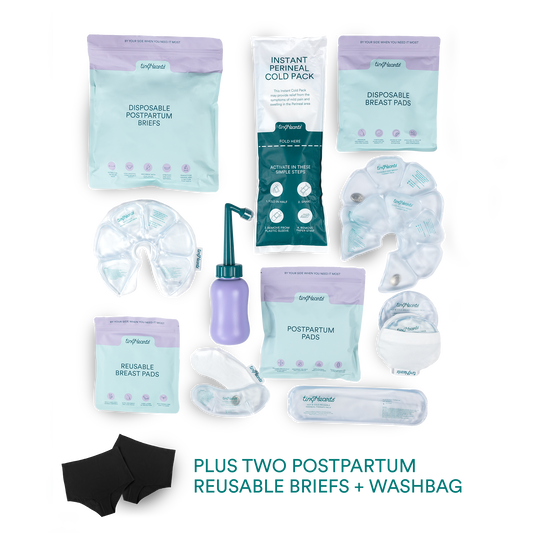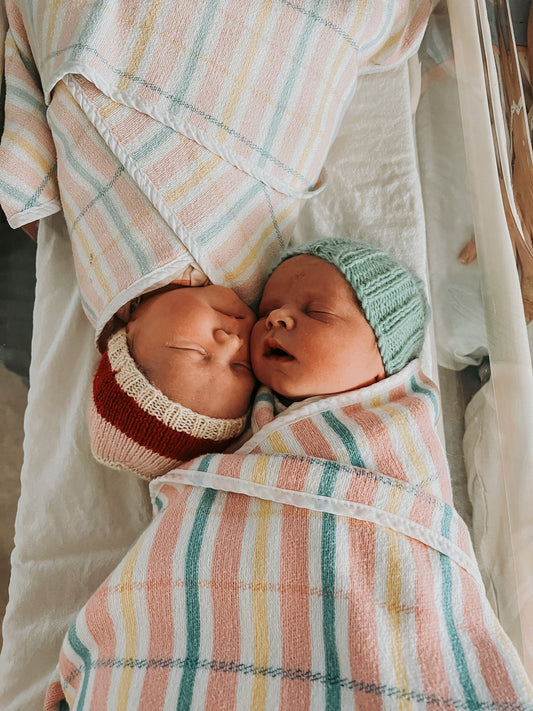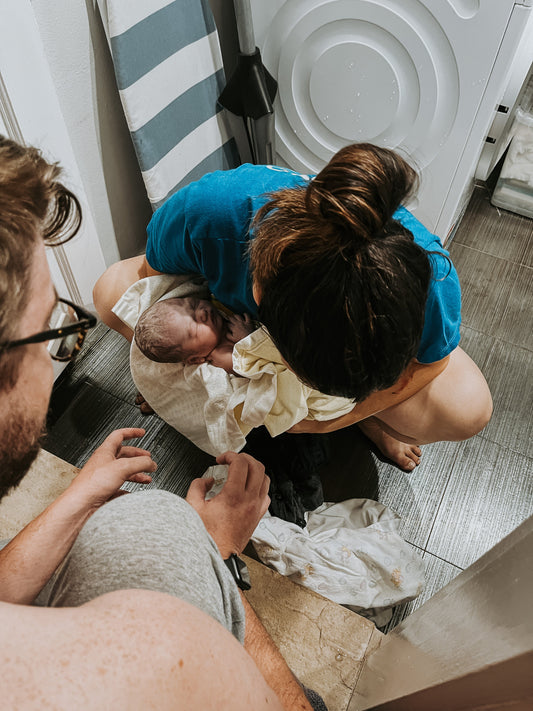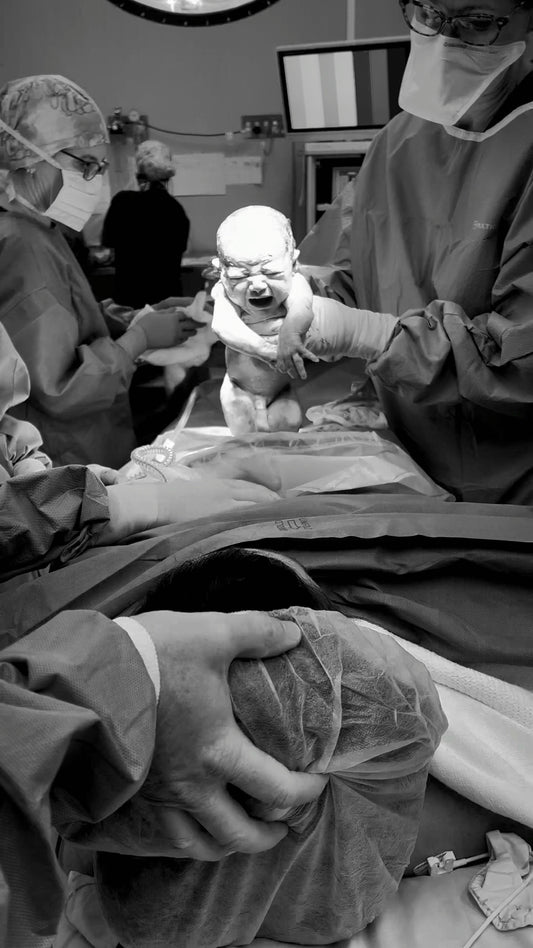what you need to know about baby girls
So, you're expecting or have a baby girl? Congratulations! 💖
In my personal experience, raising little ladies involves a whole lot of fun, love, snuggles, kisses + glitter. From me to you, these are some of the things you need to know if you love or are expecting a little lady.
caring for their vagina
Some tips for caring for your little girls vagina:
- To clean your baby girl's labia, wet a cotton ball, use a damp cloth or baby wipe, hold your baby's legs apart and wipe between the labia.
- It's so important to start at the front and gently wipe backwards - ALWAYS front to back to prevent bacteria from spreading from the anus to the vagina or urinary tract.
- Pat dry your bub's genital area with a soft towel if the area is still damp, as we don't want any moisture lingering.
- Change her nappies regularly and always check carefully; we need to remove all traces of poop.
- Avoid using anything other than barrier cream down there. It can upset the natural chemical balance of your baby's vagina and increase the risk of infection.
- Use baby-friendly products with no harsh chemicals in the bath.
- Avoid using talcum powder anywhere on your baby, including around your little girl's genitals. Talcum powder has fine particles that your baby can breathe in. Have nappy free time each day.
- Once your girl is toilet trained, avoid tight clothing, use cotton and breathable undies, and at night, let it all out; no undies.
-
baby 'periods'/ vaginal discharge
It's common for newborn baby girls to have bloody vaginal discharge in the first few days, which usually lasts no more than a couple of days. This is a normal response to mama's hormones, so there's no need to be alarmed. But if this discharge doesn't go away, you should contact your GP. You might also notice a discharge that looks a bit like an egg white or some leftover vernix from birth. This is perfectly normal, and you don't need to clean it away.

urinary tract infections [uti's]
A urinary tract infection [UTI] is when there's an infection anywhere in the urinary tract, such as the kidneys, bladder or urethra. UTIs are more common in little ones who wear nappies and even more so in girls, because their urethra is shorter compared to boys.
Signs + symptoms
- Fever
- Frequent urination
- Cloudy, foul-smelling and/or bloody urine
- Lower belly pain
- Vomiting
- Burning or stinging when doing a wee [keep in mind some kids will describe this differently such as a 'hot wee']
When to see a doctor
- If you think bub may have a UTI or is showing symptoms of having a UTI
- Bub has bleeding in their nappy/ wee or discharge that is abnormal or smelly
- Following any trauma to the area
- Unexplained fever
- Your little one is showing other red flag signs + symptoms
vulvovaginitis
This is when the vagina and vulva [which is the external genital area] become inflamed, red, itchy, and burns or stings when they wee. It's very common, self-limiting, and occurs less often after puberty. Constant moisture in the area, tight clothing, being overweight, and residue from some irritants like soap or bubble bath can all lead to vulvovaginitis, but little girls are naturally predisposed as the lining of the vagina and vulva is thin, meaning it is easily irritated. If your little one also has threadworms [and we've done a post on that before], these can also cause or worsen vulvovaginitis.
Most cases of vulvovaginitis will self resolve by wearing loose clothing, using cotton undies and rining the genital area well from soaps. If your little girl also has white, thick discharge, it may be thrush, and you should chat to your GP or pharmacist. If your little one is really distressed, the vulvovaginitis is severe or you're concerned, take them to see a Doctor.
puberty
Puberty usually begins between a girl's 8th and 13th birthday. Often, the first physical changes are breast buds or increased hair growth. Breast buds are little bumps under the nipple area which may be tender to touch and unequal on either side. You may notice increased hair growth on the legs, under the arms and in the genital region of your little girl. Following this, your little girl may have a growth spurt in height, her hips may widen, and her waist may get smaller. She may begin to sweat more noticeably and begin to experience body odour and acne. Around 6 months before her first period, she may experience a small or moderate amount of clear-white vaginal discharge. If these changes occur in our little ladies before 8, or there are no puberty related changes by the age of 13, it's important to get them medically assessed.

periods
"A period" is when a person has expected bleeding from their vagina. The first period usually begins around 2-3 years after the development of breast buds. Some girls will experience only red-brown spotting or discharge for their first period, while others will experience bright red blood. It happens around once a month and will last between 3-7 days on average for most people. However, the cycle length for little girls may vary during the first few years while the body begins to regulate itself.
When your little girl gets her first period, it's important to reassure her that it's normal and not something to be embarrassed about, but most of all, educate her about what's happening and why. It's also a good idea to discuss ways of managing her period, such as using tampons, pads, period undies or menstrual cups.
BABY girls [AND BABY boys] CAN LEAK WITCHES MILK FROM THE NIPPLES, KNOWN AS WITCHES MILK
The formal name for witches milk is "Galactorrhea in the Newborn". It's when a baby produces breast milk, usually up until two months of age. Witches milk often presents with swollen breast tissue or breast nodules [little lumps at the breast]. It can be a shock for some parents, but it's not something that needs to cause alarm. Witches milk develops because of mama's hormones in pregnancy and in breastmilk.
Witches milk can happen to baby boys or girls and is more common in breastfed bubs. It's quite uncommon, though and is only seen in around 5% of newborns. In terms of treatment, it usually self resolves without medical intervention. And no, it doesn't mean you have to stop breastfeeding. Avoid massaging the area or expressing milk. Instead, leave the area alone to avoid further more milk production or infection.
It's also important to be aware that what begins as witches milk may turn into mastitis [infection of the breast tissue - believe it or not, all men, baby boys included, have some level of breast tissue]. If bub's breast area becomes red, swollen, warm to touch, is leaking pus, or they're showing signs of being unwell, such as a temp of 38 or above, decreased feeding and wet nappies, lethargy etc., that's when you need to act and take bub to see a doctor or midwife.
I hope this helps our parents of little ladies. In the original post on Instagram and Facebook, tag your parent tribe and comment with something you wish you knew about having baby girls before they arrived.
Helping you feel prepared for parenthood is what Tiny Hearts is all about. Book into our baby + child first aid class, and let us empower you to face parenthood without fear. 💗
online baby & child first aid
$145
Learn baby & child first aid from your device at home! Purchase now and learn right away.
Our instant access course includes over 38 videos and 15 bonus downloads including content on whooping cough, croup and more!








